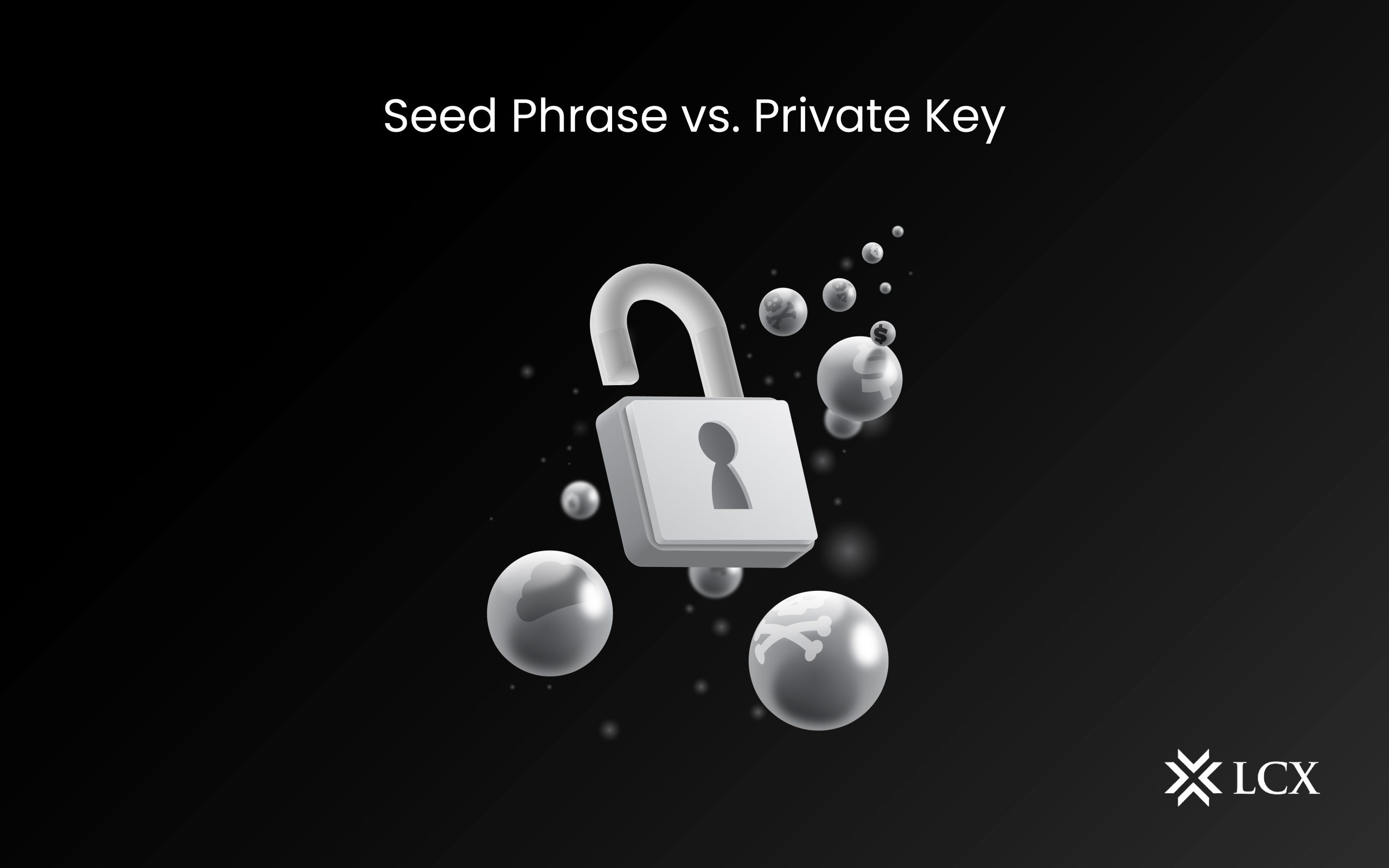It can be daunting for a newbie to enter the complex world of cryptocurrency with many terms floating around exchanges: hot wallets, private key, public key, wallet address, blockchain explorer, seed phrase, and everything else. It’s enough to drive someone crazy. if you feel like you’re unsure which one’s which, this is the article for you. It’s time to get down to the nuts and bolts of recovery phrases and private keys, their common strings, and their differences.
To understand seed phrases or 12-word seed and private keys, let’s first understand what a cryptocurrency wallet is.
Crypto Wallet
Just like a physical wallet can be used to store money, a cryptocurrency wallet is used to securely store cryptocurrency. Crypto wallets store your passkeys for signing cryptocurrency transactions and provide an interface for accessing them. Your digital assets live on the blockchain, but you can only access them using a private key. Your keys serve as proof of ownership and enable you to make transactions. The private keys to your money are irreplaceable if you lose them, you lose your assets.
Back to the point
The private key and recovery phrase are two different sides of the coin. This makes it difficult to distinguish between the differences and purposes of these two concepts and how to keep them safe because this can complicate understanding.
Here, we’ll dive deep into your private key and recovery phrase and learn how they’re related, making your crypto management a breeze.
What is a Seed Phrase?
A 12-word seed phrase is a key to unlocking a crypto wallet and is the essential tool for restoring a wallet on the blockchain. Once a wallet is created, an algorithm randomly selects 12 words from a list of 2,048 words and gives them to the user at the time of account opening. The seed phrase is the master key; therefore, if it is lost, forgotten, or mixed up, the user cannot access their crypto wallet permanently. A user’s private and public keys are intrinsically linked to the seed phrase.
A seed phrase is a collection of random words. These words and their order represent codes for accessing wallets.
Here is an example of a seed phrase:
First deer photo within exit sale notice carrot wall gap able capture
What is a Private key?
Private keys are cryptographically secure 256-bit numbers that unlock access to public keys, and they are generated when the wallet is created. Public keys are addresses on the blockchain that enable cryptocurrency recipients to receive funds. They are derived from private keys.
In order to gain a deeper understanding of private and public keys, please read the following: Key To Your Security – Private Key Vs Public Key In Blockchain – LCX
Computers see public keys as usernames or addresses where crypto resides within a wallet. Private keys are similar to secret passwords (in a traditional sense), while seed phrases are simplified versions of 256-bit private keys.
Private keys are strings of random characters representing cryptocurrency wallet addresses, allowing you to access, receive, and send crypto funds. Private Keys are created using mixed letters and numbers.
Private keys have the following main characteristics:
- There are uppercase, lowercase, and number characters in the Private Key.
- Private Keys are complex due to the random mixing of characters, without any rules, which makes them difficult for hackers to hack.
- Encrypting the Passphrase generates the Private Key.
What sets them apart?
As we’ve already explored, the terms are interlinked but entirely different ways to secure your digital assets. As a result of its logic, seed phrases are preferred over private keys. They are easy to read, easy to remember, and they can be written down easily. Regenerating your Private Key is possible with seed phrases. Seed phrases control all your private keys.
Conclusion
A crypto wallet has many components that work together to ensure the safety and security of your digital assets. The better you understand their roles and importance, the more efficiently and safely you can use and store them.









